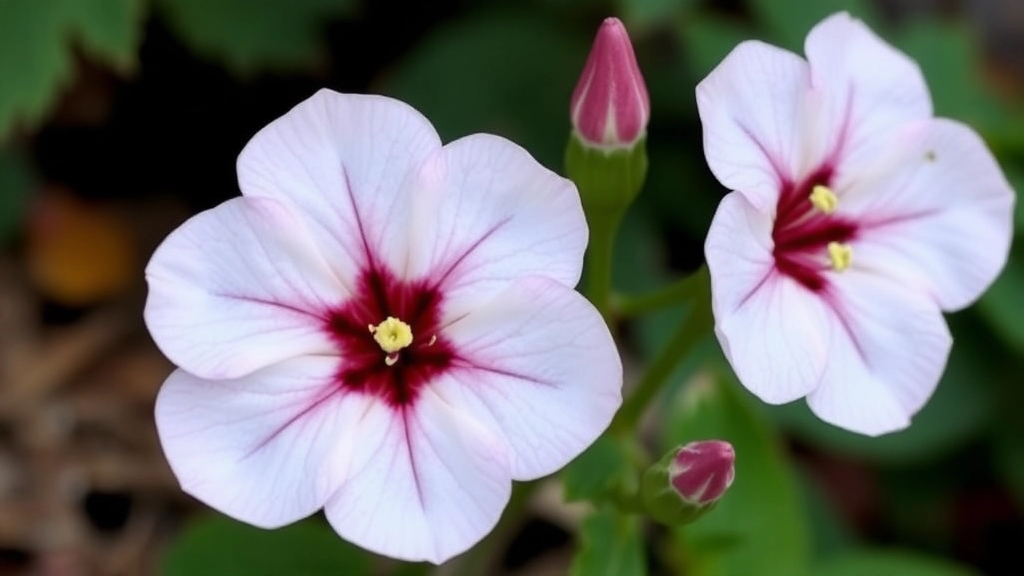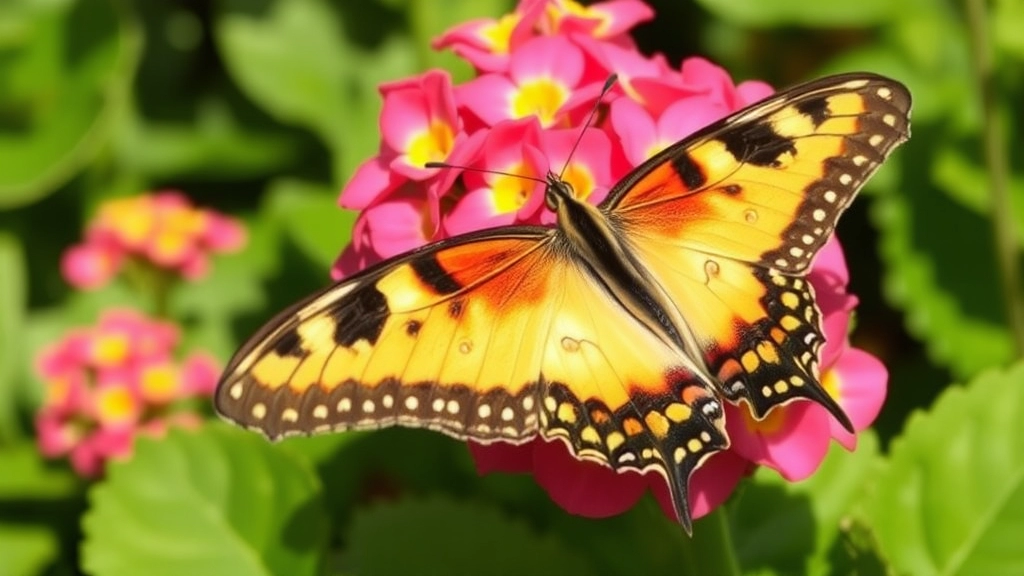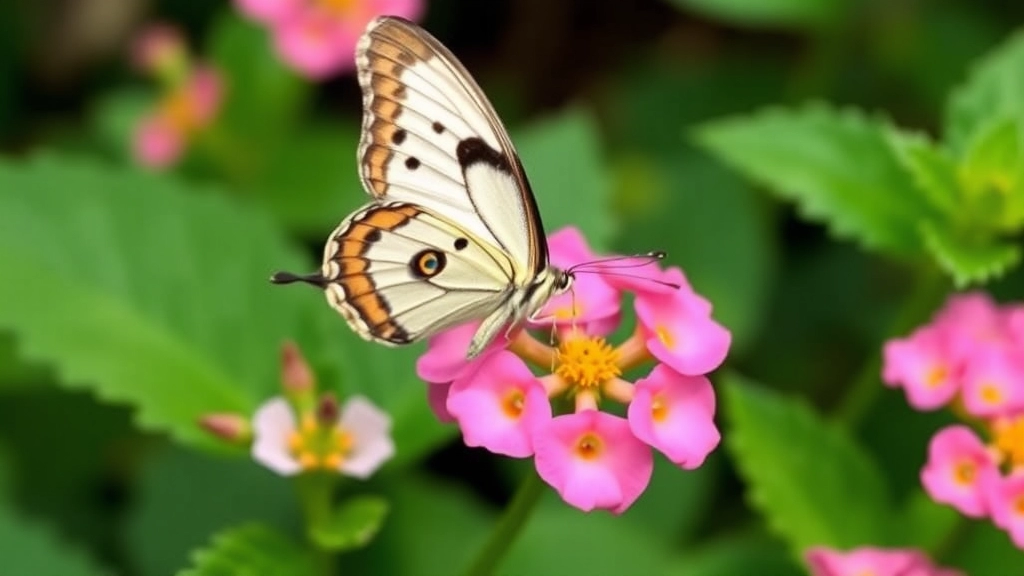Do Butterflies Like Kalanchoe?
Ever wondered, “Do butterflies like Kalanchoe?” You’re not alone. As a garden enthusiast, I’ve often found myself curious about which plants attract these beautiful creatures. Kalanchoe, with its vibrant flowers, seems like an ideal candidate, but does it truly draw butterflies?
The Relationship Between Kalanchoe and Butterflies
Let’s dive into the relationship between Kalanchoe and butterflies. This succulent is known for its colourful blooms that can brighten any garden. However, when it comes to attracting butterflies, there are a few things you need to know.
Butterfly Attraction to Kalanchoe Plants
Have you ever wondered why butterflies are so drawn to certain plants?
Kalanchoe plants, with their vibrant and diverse flowers, are a significant attraction for these beautiful insects.
Key Factors in Butterfly Attraction
- Nectar Availability: Kalanchoe flowers are known for their abundant nectar, which is a primary food source for butterflies.
- Flower Shape: The tubular shape of Kalanchoe flowers allows butterflies to easily access the nectar, making them a favourable choice.
- Bright Colours: The vivid hues of Kalanchoe, such as pinks, reds, and yellows, catch the eye of butterflies, inviting them to explore.
- Fragrance: Many Kalanchoe varieties emit a subtle fragrance, further enticing butterflies and other pollinators.
By planting Kalanchoe in your garden, you create a welcoming environment for butterflies, contributing to their populations and enhancing the beauty of your outdoor space. For more information on how to care for these beautiful plants, check out our ultimate guide on Kalanchoe care. If you are interested in exploring different types of Kalanchoe, be sure to read our article on top Kalanchoe types for your garden.
Characteristics of Kalanchoe Flowers

Have you ever been captivated by the vibrant blooms of Kalanchoe?
These flowers are not just pretty faces; they come packed with unique characteristics that make them a must-have in any garden, especially if you’re looking to attract butterflies.
Colorful Display
One of the standout features of Kalanchoe flowers is their stunning array of colours.
- Bright Reds: These can really pop in your garden.
- Soft Pinks: Perfect for a delicate touch.
- Sunny Yellows and Oranges: They mimic the warmth of a sunny day.
- Pure Whites: A classic choice that complements any landscape.
Unique Petal Structure
The flowers have a unique structure that can vary significantly between species.
- Clustered Blooms: Many Kalanchoe varieties produce clusters of small flowers, creating a lush, full look.
- Bell-Shaped Petals: These can attract butterflies, as they provide a comfortable landing spot.
Long Blooming Period
Kalanchoe flowers are known for their longevity.
- They can bloom for several weeks, providing a continuous source of nectar for visiting butterflies.
Foliage and Texture
The leaves of Kalanchoe are just as interesting as the flowers.
- Thick and Succulent: They store water, making Kalanchoe a resilient choice for gardens.
- Variegated Patterns: Some varieties boast unique leaf patterns, adding visual interest even when not in bloom.
When considering how to attract butterflies, understanding the ideal growing conditions for Kalanchoe is essential.
Kalanchoe, known for its vibrant flowers, thrives in specific environments that not only benefit the plant but also create a welcoming habitat for butterflies.
### Light Requirements:
– Kalanchoe prefers bright, indirect sunlight.
– A south or west-facing window is optimal.
– Avoid direct afternoon sun, which can scorch the leaves.
### Soil Preferences:
– Use well-draining potting mix to prevent root rot.
– A cactus or succulent mix works wonders.
– Ensure the pot has drainage holes for excess water.
### Watering Needs:
– Allow the soil to dry out between waterings.
– Water thoroughly but infrequently, about every two to three weeks.
– Overwatering can lead to wilting and disease.
### Temperature and Humidity:
– Kalanchoe thrives in temperatures between 15°C to 25°C.
– It prefers low humidity, making it ideal for indoor settings.
– Protect from frost; bring indoors during colder months.
### Fertilization:
– Feed with a balanced, water-soluble fertilizer every 4-6 weeks during the growing season.
– Reduce feeding in the winter months when growth slows.
For more detailed care tips, you can check out the [ultimate guide to variegated Kalanchoe care tips](https://planthq.org/ultimate-guide-to-variegated-kalanchoe-care-tips/) and learn about [growing Kalanchoe outdoors](https://planthq.org/growing-kalanchoe-outdoors-tips-for-success/).
Common Butterfly Species Visiting Kalanchoe

As we delve deeper into the enchanting world of Kalanchoe plants, it’s essential to highlight the butterfly species that are often drawn to these vibrant blooms.
Butterflies are not just beautiful creatures; they play a crucial role in pollination and maintaining the ecosystem. If you’re nurturing a butterfly garden, knowing which species are attracted to Kalanchoe can enhance your gardening experience.
Here are some common butterfly species that frequent Kalanchoe flowers:
- Common Buckeye (Junonia coenia)
Recognisable by its striking eye spots, this butterfly is often seen fluttering around Kalanchoe, attracted to its bright colours. - Painted Lady (Vanessa cardui)
This migratory butterfly loves a variety of nectar sources, including Kalanchoe, making it a frequent visitor. - Cabbage White (Pieris rapae)
While primarily known for its affinity for cabbage, this butterfly also enjoys the nectar from Kalanchoe flowers. - Tiger Swallowtail (Papilio machaon)
Its large, vibrant wings make it hard to miss. This butterfly is drawn to Kalanchoe’s rich nectar. - Red Admiral (Vanessa atalanta)
Known for its striking black and red markings, the Red Admiral is another butterfly that appreciates Kalanchoe’s offerings.
These butterflies not only enhance the beauty of your garden but also contribute to the pollination of your plants, ensuring a thriving ecosystem.
Benefits of Planting Kalanchoe in Butterfly Gardens
Creating a butterfly garden can be an enriching experience, especially when you choose the right plants.
Kalanchoe, with its vibrant blooms and succulent leaves, offers numerous benefits for butterfly enthusiasts.
1. Attracts Butterflies
Kalanchoe flowers are not just visually appealing; they are a magnet for butterflies. The nectar-rich blossoms provide a vital food source, drawing various butterfly species to your garden.
2. Extended Blooming Period
Kalanchoe plants typically bloom for an extended period, ensuring that there’s always something in flower. This continuous supply of nectar keeps butterflies coming back throughout the season.
3. Low Maintenance
For those who may worry about upkeep, Kalanchoe is a relatively low-maintenance plant. It thrives in well-draining soil with minimal watering, making it ideal for busy gardeners. For more detailed tips, check out this ultimate guide to growing and caring for succulent plant Kalanchoe.
4. Versatile Aesthetic Appeal
Kalanchoe comes in various colours and forms, enhancing the visual appeal of your butterfly garden. Their unique shapes and hues can create a stunning backdrop for fluttering visitors.
5. Supports Ecosystem Health
By planting Kalanchoe, you contribute to a healthier ecosystem. These plants support not just butterflies but also other pollinators, promoting biodiversity in your garden. Learn more about the medicinal properties and health benefits of Kalanchoe.
6. Companion Planting Opportunities
Kalanchoe pairs well with many other plants that attract butterflies, enhancing your garden’s overall effectiveness. Consider planting alongside species like lavender or marigold for a vibrant, butterfly-friendly space.
Companion Plants for Kalanchoe to Attract More Butterflies

So, you’ve got your Kalanchoe plants thriving, and you’re eager to attract even more butterflies to your garden.
What if I told you that pairing your Kalanchoe with the right companion plants can create a butterfly haven?
Here are some fantastic plants to consider:
- Lavender: Not only does it smell divine, but its purple blooms are a magnet for butterflies.
- Butterfly Bush (Buddleja): These beauties are practically named for their butterfly allure, attracting a range of species.
- Coneflower (Echinacea): With its vibrant petals, coneflower is another butterfly favourite, plus it’s a great pollinator.
- Milkweed: Essential for monarch butterflies, planting milkweed can significantly boost your garden’s butterfly population.
- Zinnias: These colourful flowers are easy to grow and attract butterflies like a charm.
By mixing these plants with your Kalanchoe, you’re not just adding beauty to your garden; you’re creating a buffet for butterflies.
Imagine the sight of butterflies flitting around, all thanks to your thoughtful planting choices!
And let’s not forget, these companions can also enhance the overall health of your garden, providing a diverse ecosystem that supports various pollinators.
Seasonal Care Tips for Kalanchoe to Support Butterfly Populations
As we delve into the seasonal care of Kalanchoe, it’s essential to understand how these practices not only benefit the plant but also create a welcoming environment for butterflies.
FAQs About Butterflies and Kalanchoe Flowers
Do butterflies like Kalanchoe flowers?
Yes, butterflies are attracted to Kalanchoe flowers due to their vibrant colors and rich nectar.
What colors of Kalanchoe flowers attract butterflies the most?
Butterflies are particularly drawn to bright reds, soft pinks, sunny yellows, oranges, and pure whites.
What are the unique characteristics of Kalanchoe flowers that attract butterflies?
Kalanchoe flowers have clustered blooms and bell-shaped petals, which provide a comfortable landing spot for butterflies.
How long do Kalanchoe flowers bloom?
Kalanchoe flowers can bloom for several weeks, offering a continuous source of nectar for butterflies.
Which butterfly species are commonly attracted to Kalanchoe flowers?
Common butterfly species that frequent Kalanchoe flowers include the Common Buckeye, Painted Lady, Cabbage White, Tiger Swallowtail, and Red Admiral.
What companion plants can I pair with Kalanchoe to attract more butterflies?
Companion plants that can enhance butterfly attraction include Lavender, Butterfly Bush, Coneflower, Milkweed, and Zinnias.
Why is it beneficial to attract butterflies to my garden?
Butterflies not only add beauty to your garden but also play a crucial role in pollination, helping to maintain a thriving ecosystem.
What makes Kalanchoe a resilient choice for gardens?
Kalanchoe plants have thick, succulent leaves that store water, making them a resilient and low-maintenance option for gardens.
Can Kalanchoe’s foliage add visual interest to my garden even when not in bloom?
Yes, some Kalanchoe varieties have variegated leaf patterns that add visual interest to your garden even when the flowers are not in bloom.
How can I create a butterfly haven in my garden?
By pairing Kalanchoe with companion plants like Lavender, Butterfly Bush, Coneflower, Milkweed, and Zinnias, you can create a diverse and attractive environment for butterflies.
References
-
Kalanchoe Flowers: Characteristics and Care Tips
-
Top 10 Plants for Butterflies
-
Kalanchoe: Planting, Growing, and Care
